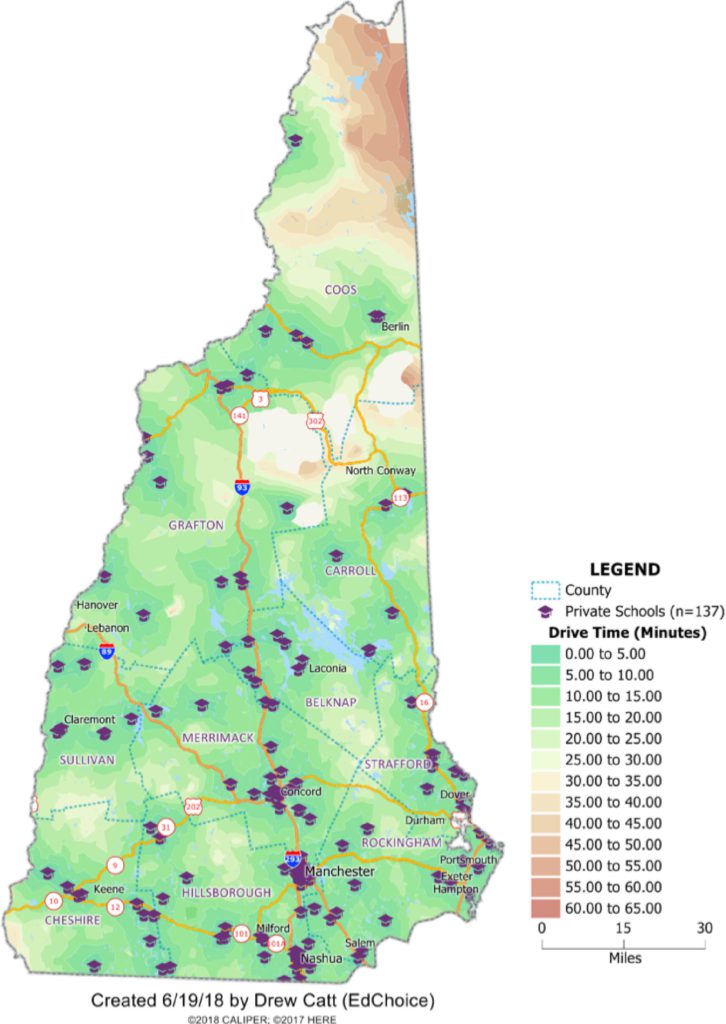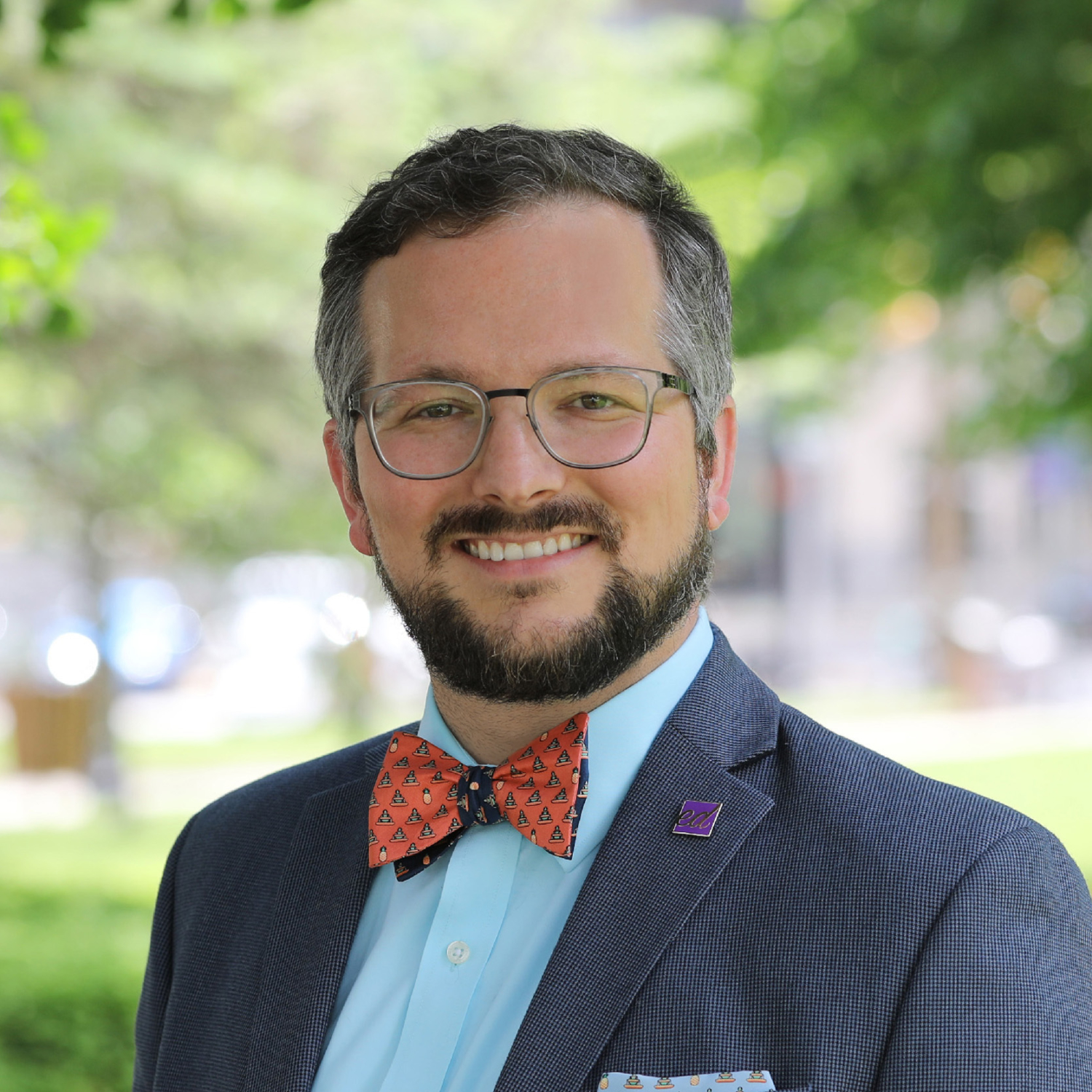Mapping Drive Times from Private Schools in New Hampshire
New Hampshire already has a tax-credit scholarship and town tuitioning, and according to recent survey data, many existing New Hampshire private schools are open to participating in a general education savings account (ESA) program, another form of flexible private school choice.
But where exactly are New Hampshire private schools located? Which communities have private schools, and which don’t? And how quickly can families in the Granite State transport their children to private school options?
The private school drive-time map below begins to answer some of these questions.

Here’s a quick breakdown of what the New Hampshire map shows:
- All students in grades K–12:
- 32 percent live within a five-minute drive of at least one private school
- 66 percent live within a 10-minute drive of at least one private school
- 87 percent live within a 15-minute drive of at least one private school
- 96 percent live within a 20-minute drive of at least one private school
- Nearly 99 percent live within a 25-minute drive of at least one private school
- 911 students (0.4%) live 30 minutes or more from at least one private school
- Families that, based on their income, would qualify for free or reduced-price lunch (conservatively assumes income less than $35,000 for a family of three):
- 38 percent live within a 5-minute drive of at least one private school
- 70 percent live within a 10-minute drive of at least one private school
- 86 percent live within a 15-minute drive of at least one private school
- 95 percent live within a 20-minute drive of at least one private school
- 98 percent live within a 25-minute drive of at least one private school
- 345 income-eligible families (0.7%) live 30 minutes or more from at least one private school
- Households’ median incomes:
- $59,702 for those zero to five minutes from at least one private school
- $70,571 for those five to 10 minutes from at least one private school
- $67,360 for those 10 to 15 minutes from at least one private school
- $55,693 for those 15 to 20 minutes from at least one private school
- $46,495 for those 20 to 25 minutes from at least one private school
- $39,605 for those 25 to 30 minutes from at least one private school
Earlier this year, we surveyed New Hampshire private schools about their capacity, tuition and fees, interest in choice programs and concerns with education policies. While not every private school mapped here responded to the survey for our recent brief, Exploring New Hampshire’s Private Education Sector, some data presented in it align with the map.
For instance, Manchester, Concord and Nashua were the top three cities with the largest number of respondent private schools in our survey, and these cities likewise appear to offer numerous drivable private school options.
It’s important to note that New Hampshire’s private school landscape is influenced by population and geography. These larger, southern New Hampshire cities have the bulk of the state’s private schools and school-age population, which affects drive time measurements for the state as a whole. The private school “deserts” in the northern part of the state may be devoid of high-speed roads and high populations. This especially seems to be true in the White Mountain National Forest area.
These geographic considerations are also important in comparing the state’s private school landscape to others’. Our previous private school drive-time maps were created in states larger than New Hampshire, with populations in Mississippi (30 percent within a 10-minute drive) and South Carolina (68 percent within a 10-minute drive) experiencing longer drive times than New Hampshire.
The EdChoice Research Team hopes to continue expanding our mapping capabilities and projects. Coming soon, we will release a report and interactive map looking at where there is a lack of reasonable access to highly rated schools or multiple schooling sectors in Indiana. We’ll also plan to generate more private school drive-time maps for related surveys in additional states.
If you would like to pitch new mapping projects to the EdChoice research team, email research@edchoice.org.





